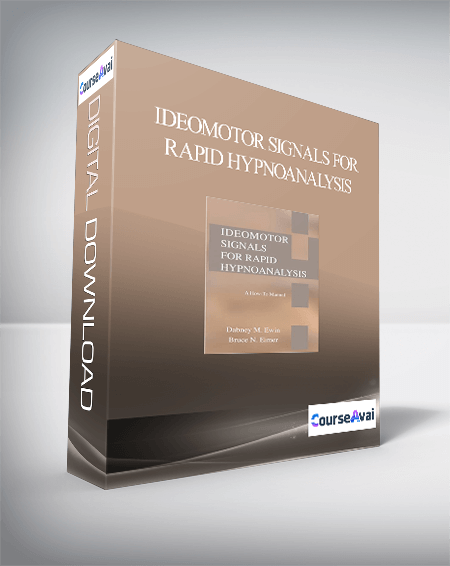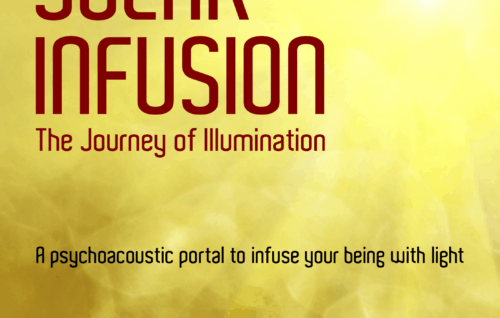Ideomotor Signals for Rapid Hypnoanalysis: A How-to Manual?
$97.00 Original price was: $97.00.$36.00Current price is: $36.00.
Master your mind with the Ideomotor Signals for Rapid Hypnoanalysis: A How-to Manual? course, available for just $97.00 Original price was: $97.00.$36.00Current price is: $36.00. on NLPLib.com! Specializing in Neuro-linguistic programming, we offer premium downloadable courses to transform your communication and personal effectiveness. Dive into Hypnosis and unlock profound insights. Start your NLP journey today!
Salepage link: At HERE. Archive:
Ideomotor Signals for Rapid Hypnoanalysis: A How-to Manual?
More than 25 years ago I took my first workshop from David B. Cheek, M.D., on ideomotor signaling and exploration. I was so fascinated by what I learned that I read his book (Cheek & LeCron,1968) and then began searching out every article he had ever written.
As I began applying ideomotor techniques in my hypnosis practice, I was startled at the effectiveness of these techniques. Finally in about 1982, I called David and asked him if it might be possible to consult with him and “pick his brain” for further refinements of technique.
He said, “Certainly,” and gave me his home phone number. I asked him how much he would charge me for these phone consultations and he said, “I won’t charge you anything. If I can be helpful that would be great. Just call me at home, and if I’m busy I will tell you and ask you to understand, but usually I’m not all that busy and we can visit.”
Get Dabney M. Ewin – Ideomotor Signals for Rapid Hypnoanalysis: A How-to Manual? course immediately at the CourseAvai
This led to many hours of telephone mentoring by Dr. Cheek and to my developing a close relationship with this gentle, but humble giant of a man.
Dr. Cheek was an obstetrician and gynecologist. In one of those phone calls, I presented a case to David of a woman who had come to see me in the Sex and Marital Therapy Clinic for anorgasmia, but she also mentioned that she had uncontrollable, recurrent vaginitis.
The woman was a nurse. She had seen half a dozen gynecologists, would go on medication, the vaginitis would clear up, and then within three weeks it would be back. No one, including gynecologists at the medical school where I practice, had been able to figure out her case. I asked David if he thought that vaginal infections could have a psychogenic component. He replied, “Absolutely,” and went on to describe how emotions or inner conflict could throw off the pH balance of the vagina, allowing infections to develop.
In the next interview, we did ideomotor exploration and discovered that the vaginitis was an unconscious way of the patient punishing herself because of guilt about sexual involvement when she was not mar-ried. We worked through her guilt within a matter of minutes and obtained an unconscious commitment that it was no longer necessary for her to continue having problems with vaginitis. In a 15-year followup on this case,
I learned that in all those years, she had only had one or two episodes of vaginitis. I could cite many similar “miraculous” cases involving chronic pain and other somatic symptoms, as well as a variety of psychological conditions. It was cases like this that convinced me of the power of the mind to influence the body, and of the power of ideomotor signaling to produce rapid therapeutic change—often allowing the insight-oriented phase of treatment to be dramatically shortened to just one or a handful of sessions.
Get Dabney M. Ewin – Ideomotor Signals for Rapid Hypnoanalysis: A How-to Manual? course immediately at the CourseAvai
My approach to psychotherapy and hypnotherapy has always been very eclectic, and I have tried to remain open to learning from a wide variety of approaches to the use of hypnosis. Yet, out of the many dozens of hypnotherapeutic techniques that I have learned and used through the years (Hammond, 1990), the single most valued and valuable hypnosis technique has been ideomotor signaling.
I recall a conversation that I had with Ernest Rossi in the late 1980s, just after he published a book (Rossi & Cheek, 1988) with Dr. Cheek—a conversation with which I resonated. He shared that in the field of hypnosis, he had been most intrigued by the work of Dr. Milton Erickson, but that to him the next most fascinating figure in our field was Dr. David
Cheek.
Despite my deep affection and appreciation for Dr. Cheek, David knew that I did not agree with him on a couple of points. He believed that there should not be an ideomotor signal for “I don’t know,” as there was in his original work with LeCron (Cheek & LeCron, 1968).
He had come to believe that at some level, the patient did know the answer, and, therefore, that such a signal provided the patient with a “cop-out.” However, research (as reviewed in Brown, Scheflin, & Hammond, 1998) has shown that not allowing someone to respond that they “do not know” an answer will result in increased confabulation.
In fact, this is one of the most serious flaws in the hypnosis and memory research on confabulation-research which by its very design, was destined to show increased confabulation, even though it has been documented (Brown et al., 1998) that hypnosis is no more likely to create pseudomemories than waking interviews…
Ideomotor Signals for Rapid Hypnoanalysis: A How-to Manual?
In today’s managed mental health care environment, clinical hypnosis has become popular as a tool for alleviating symptoms promptly. This book is about using ideomotor (IM) signals in the rapid hypnoanalysis of psychosomatic disorders. The technique of rapid hypnoanalysis addresses the whole brain and places the feeling back into brief therapy without removing the logic or the efficiency.
It offers a refreshing alternative that allows therapists to go deeper while being even briefer. Part I covers basic concepts and principles.
The value, principles, and treatment planning of hypnoanalysis are discussed, including special intake questions and how to set up ideomotor signals. Part II covers basic applications of rapid hypnoanalysis and illustrates their employment. The seven common causes of psychosomatic disorders, ideomotor applications to Direct Suggestion in Hypnosis (DSIH), hypnotic preparation and care of the surgical patient, self-hypnosis, and treating the cognitive and emotional components of persistent pain are examined.
Part III presents clinical transcripts of cases to illustrate the actual uses of the technique with psychosomatic patients. These transcripts explore the technique with a complex smoking cessation patient, a simple smoking recall session, a one-visit cure of a hypersensitive scar, and a workshop demonstration session with an asthma patient. This is a ‘how-to’ book that provides numerous case examples and illustrations showing specifically how ideomotor analysis techniques are used.
Get Dabney M. Ewin – Ideomotor Signals for Rapid Hypnoanalysis: A How-to Manual? course immediately at the CourseAvai
Invest in lasting growth with the Ideomotor Signals for Rapid Hypnoanalysis: A How-to Manual? course at NLPLib.com! Gain lifetime access to expert-crafted NLP content, designed to boost your skills and personal mastery.
- Lifetime Access: Unlimited access to your purchased NLP courses.
- Exceptional Value: Save up to 80% compared to original course prices.
- Secure Payments: Shop confidently with PayPal, Stripe, and more.
- Practical Skills: Empower your mind with actionable, real-world NLP techniques.
- Instant Download: Begin learning immediately after purchase.
- Learn Anywhere: Access your NLP courses on any device.
Elevate your potential with NLPLib.com!
Specification: Ideomotor Signals for Rapid Hypnoanalysis: A How-to Manual?
|
User Reviews
Only logged in customers who have purchased this product may leave a review.
Request a new course if you still can’t find your favorite course. >> Request now!

$97.00 Original price was: $97.00.$36.00Current price is: $36.00.














There are no reviews yet.